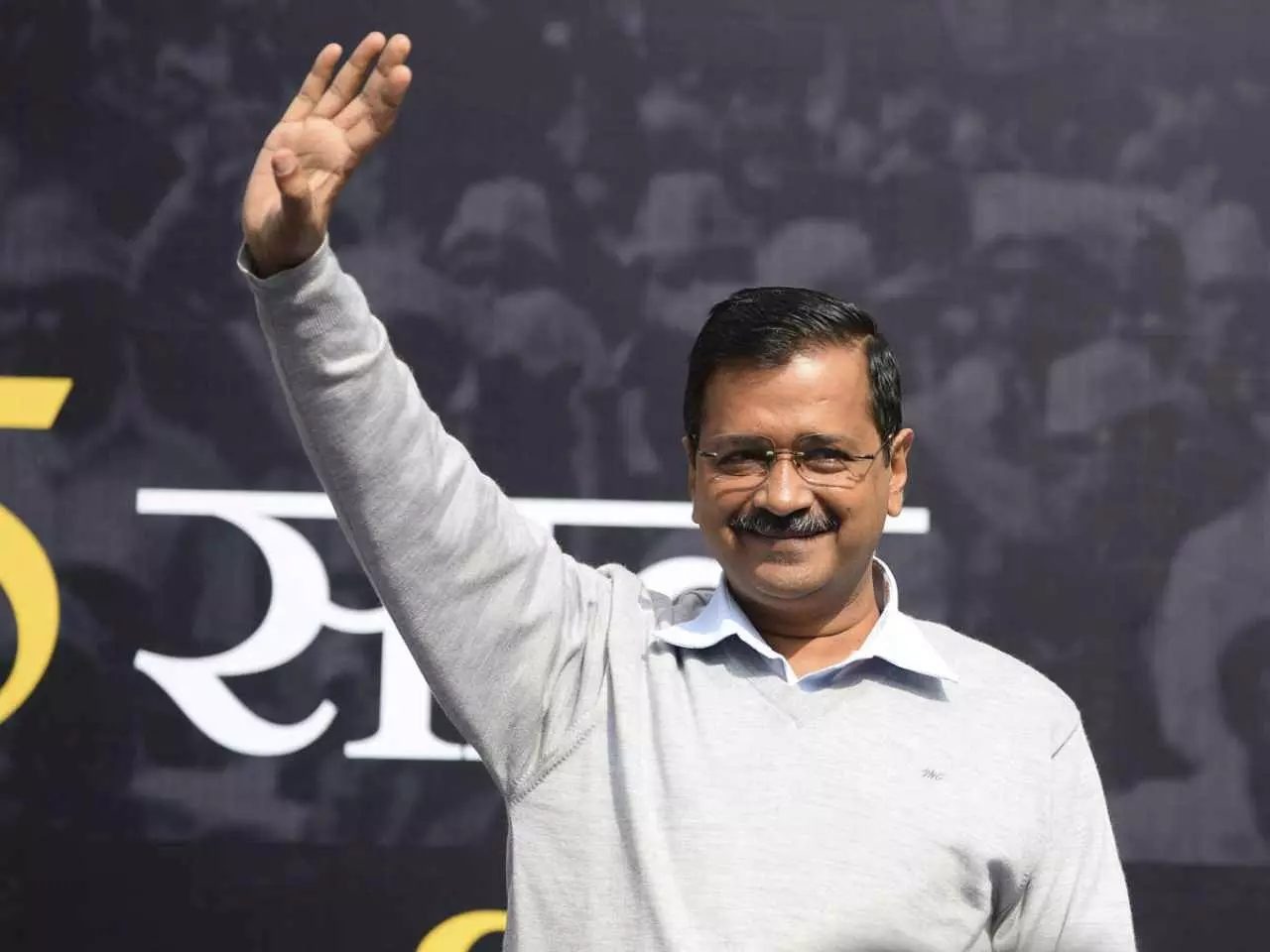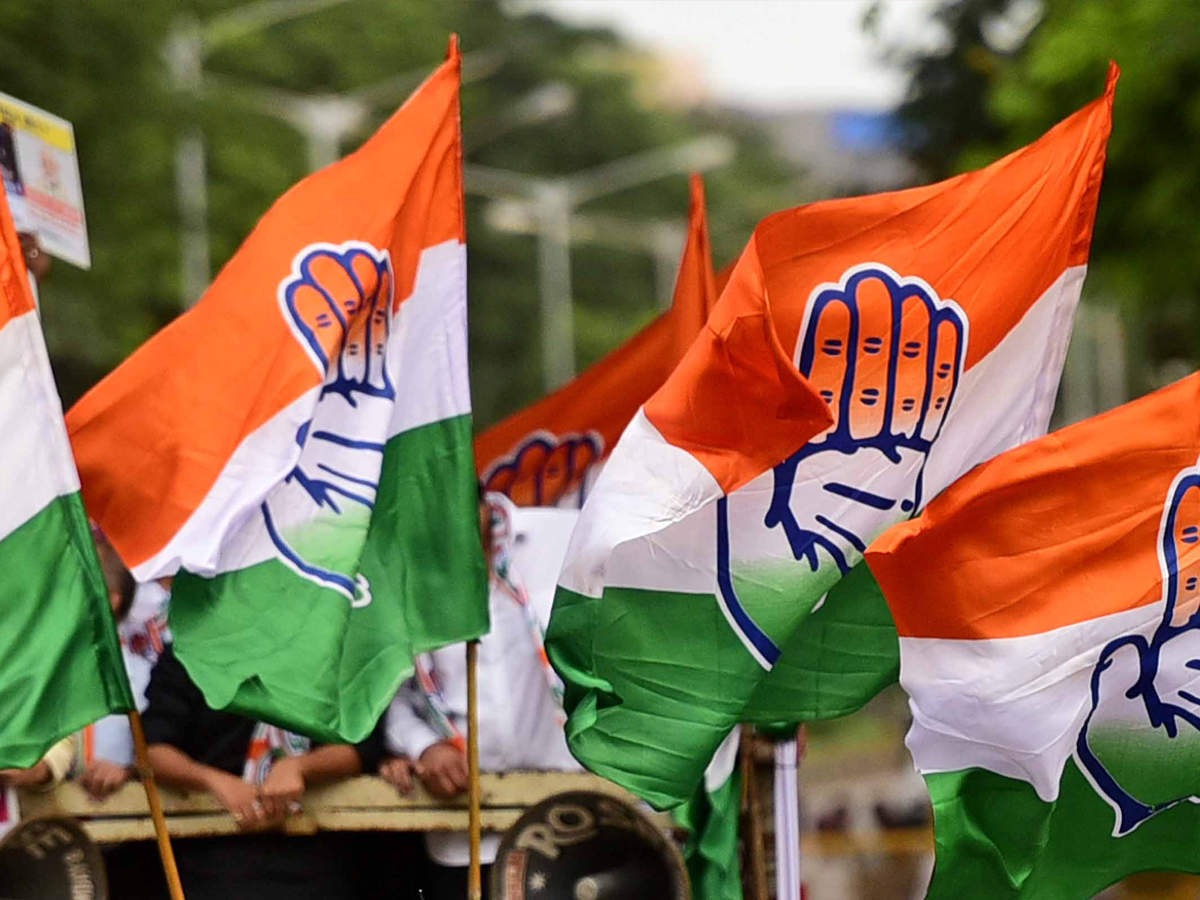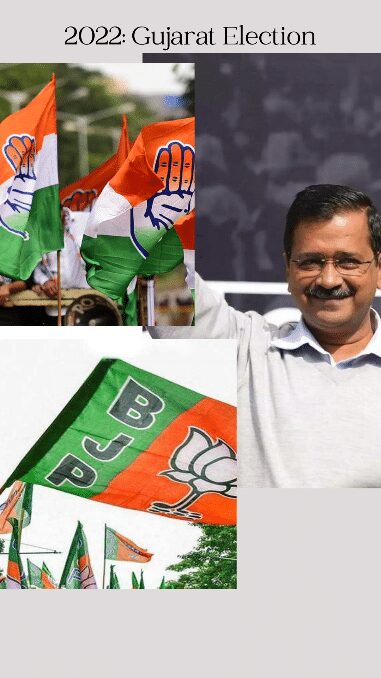As the elections in Gujarat approach, the power tussle between the BJP, Congress and AAP is only getting stronger.
The electoral competition in Gujarat is getting more and more complex as the power tussle gains strength and with different schemes being endorsed by the competing parties, Gujarat is witnessing a model conflict.
About 27 years have passed since the Bharatiya Janata Party (BJP) came to power in the state. Gujarat will hold elections for 182 seats in December.
There has been a considerable amount of interest in the upcoming Assembly elections in Gujarat and the reason is very favourable– Gujarat will witness a trilateral contest for the time since 1990. The BJP, Congress, and Janata Dal competed against one another during the 1990 State polls.
Gujarat’s alternatives this time around are the Congress, the BJP, and AAP. No other party has confronted the BJP’s electoral infrastructure in the preceding 32 years in the same way as AAP.
This is a collision of many models. The Congress wants to apply the Rajasthan Framework in the state, whereas the AAP is committed to implementing its Delhi Framework. The Gujarat Model continues to have complete support from the BJP.
Gujarat Elections: BJP’s strategy to retain power

BJP’s Model for Gujarat election includes advancement, growth and prosperity concealing its dominant Hindu and majoritarian ideology. Gujarat is prominent for thriving on polarisation and sectarian politics, often called ‘the saffron laboratory of India’, where in the BJP and RSS have sampled their social architecting scheme.
Being rooted in development, it is highly pro-urban, pro-uppercaste and pro- entrepreneurship, it has imperceptibly affirmed its pro-Hindutva tone. With rising urban population that endorses these values as an effect of the delimitation practiced in 2009,the BJP has been able to amass several Hindu castes into a stratified Hindu alliance that is also hierarchical in nature.
After 2014, however, Modi’s appeal in Gujarat hasn’t diminished. He continues to be a popular figure for the BJP in Gujarat.
Gujarat Elections: How will the AAP’s Delhi Model play out in Gujarat?

AAP is pursuing the exact route as BJP, its opposition in terms of strategies utilized during elections. Extensive counter-attacks, clashing with the opponents and transmitting desired utterances through the fierce poll campaign, ambassadors and social outlets.
The Congress, which has served as the state’s primary opposition for more than 20 years, has not been able to successfully catapult itself into the public eye like the Aam Aadmi Party has.
In the lead-up to the Assembly elections, the Aam Aadmi Party’s campaign in Gujarat has developed into a “mass movement” against the incumbent BJP, according to Delhi’s chief minister Arvind Kejriwal as the party continues to give assuring promises with conviction.
Gujaratis who are dissatisfied are calling for change. Through the Delhi Model, the AAP intends to raise the pay for a number of public employees, including police officers and state transportation employees. Through its constant presence in Gujarat, Kejriwal is making a lasting impression as he continues to make poll promises–free, high-quality healthcare services as well as free education.
Gujaratis are praising Delhi Model for its subtly Hindutva-leaning tendencies. The common consensus is that Gujarat’s mentality has successfully assimilated the AAP cadre.
Gujarat Elections: Congress’s struggle for attaining power

The Congress continues to hold the false belief that it has a robust grassroots organisation in Gujarat. Eight years have passed since PM Modi leveraged this Gujarat Model to quickly ascend to the position of Prime Minister of India.
The Congress is attempting to persuade voters that Modi as PM and AAP in Gujarat are traditional RSS tactics to erode Congress support.
Sadly, the party is more concerned with discrediting the BJP and AAP’s models than it is with promoting the Congress. The Congress is putting a lot of effort into proving that these models are false and that significant advertising has been done at the expense of the taxpayer.
This Rajasthan Framework and how it serves the upper middle, lower middle, and impoverished strata of society will be a major theme of the Congress manifesto, that will be released in October.After the political upheaval in the state, it is unclear if the “Rajasthan Model” would continue to be the Congress’ main tenet.
The Old Pension Scheme (OPS), which has been a source of conflict in Gujarat, was first announced to be reinstated by the Congress. The same has also been promised by Arvind Kejriwal.Gujarat dairy producers have been offered a Rs 5 incentive per each litre of milk purchased, akin to the Rajasthan Model, in an effort to win over the rural populace and milk cooperatives. By providing subsidies, the Congress hopes to apply the Rajasthan Model to the power industry as well. Instead of the BJP’s nighttime supply, it has offered Gujarat farmers midday power.
Lastly, the Congress also aims to provide every person with an insurance policy worth Rs 5 lac, maintaining the Rajasthan Model.
As voting day draws near, political analysts and pollsters on the ground claim that Kejriwal has succeeded in casting the Gujarat elections as a contest between the BJP and AAP while the Congress, the main opposition party, provides a “cool response.”
https://www.deccanherald.com/opinion/in-gujarat-congress-looks-for-a-repeat-of-2017-1142248.html
Riding high on the AAP’s stunning victory in Punjab, Kejriwal staged a roadshow in Ahmedabad on April 1, kicking off his party’s election campaign in Gujarat. Targeting almost every group in the section of voters by offering them ‘guarantees’, AAP has managed to persuade women, the youth, government workers, farmers, businessmen and his recent addition being auto rickshaw drivers.
Making certain elevated poll “guarantees” during his rally in Ahmedabad, these include–300 free electricity units per household, 10 lakh jobs for youth, and the revocation of farm loan.
In 27 years, the Congress has failed to overthrow the BJP. Kejriwal is aggressively striving to fill the void left by the absences of the Congress’s governance in the state, where the Congress continues to hold the lead over the AAP. With almost a three decade long rule, BJP has maintained a strong hold in Gujarat, though the current generation might be inclined to explore the other alternative at hand, which might provide a fertile ground for AAP.
The BJP remained in power in the 2017 elections by capturing 99 of the cumulative 182 seats, while the Congress did win 77.
The AAP, which ran candidates in 29 seats during the 2017 elections but was unable to extend its account, is preparing to run candidates across every seat this time around in an effort to unseat the BJP. As the trilateral tussle of power unfolds, all eyes are on the Gujarat elections due this December.












